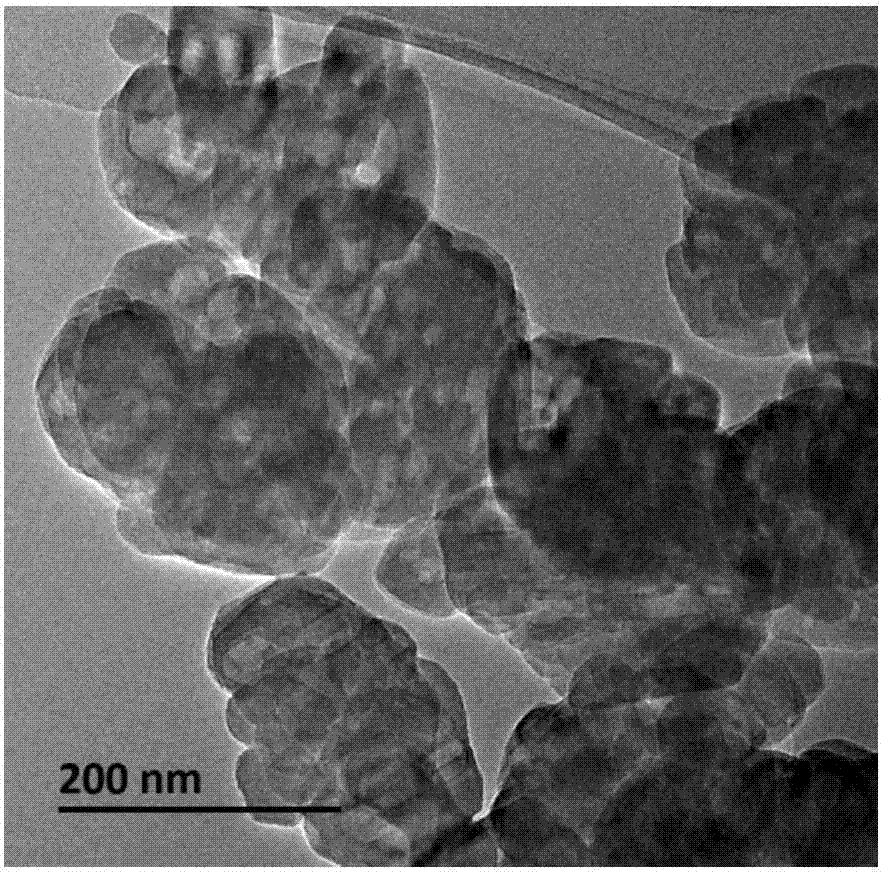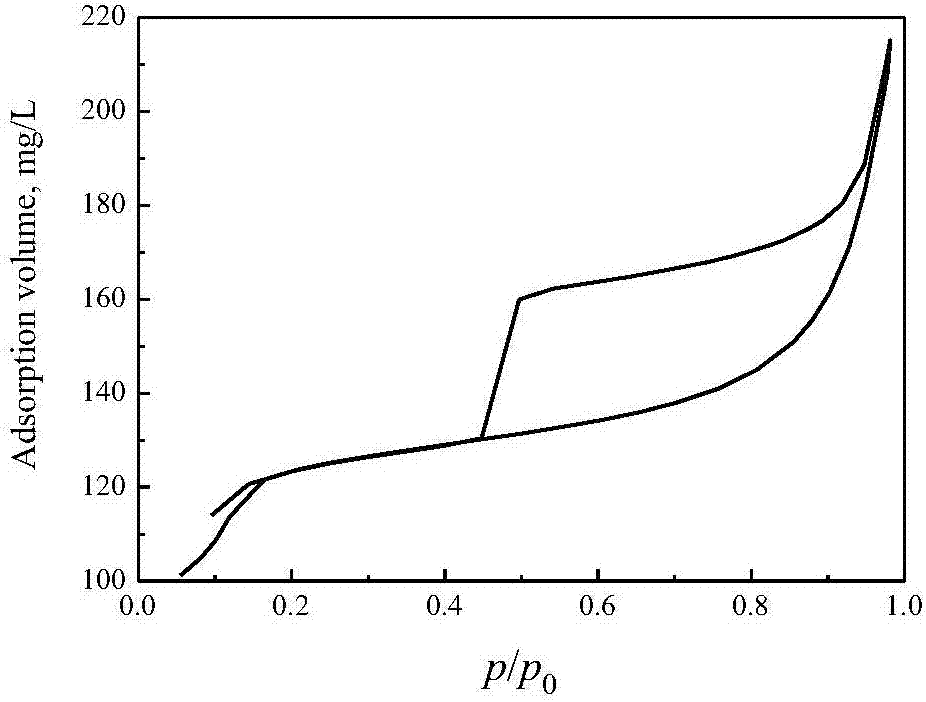Method for preparing dichloropropanol
A technology of dichloropropanol and chloropropene, applied in chemical instruments and methods, catalyst activation/preparation, introduction of hydroxyl and halogen preparation, etc., can solve the problems of intensified side reactions, large waste water discharge, high energy consumption, etc., and achieve the goal of reaction The effect of mild conditions, safe and efficient process, and high conversion rate of raw materials
- Summary
- Abstract
- Description
- Claims
- Application Information
AI Technical Summary
Problems solved by technology
Method used
Image
Examples
preparation example Construction
[0046] The preparation method of the TS-2 molecular sieve adopted in the embodiment is as follows: a certain amount of tetrabutylammonium hydroxide solution (TBAOH, 20%) is mixed with ethyl orthosilicate (TEOS), and then added to the obtained solution under vigorous stirring conditions. Add the required amount of n-butyl titanate [Ti(OBu) 4 ] in anhydrous isopropanol, stirred for 30 minutes to obtain a clear liquid after the hydrolysis was completed. Finally, 2 times the required amount of distilled water was added, and the resulting sol was stirred at 348-353 K for 2 h to remove the alcohol. The chemical composition of the obtained sol is 0.20TBAOH:SiO 2 : 0.03TiO 2 : 20H 2 O. The sol was crystallized at 443K for 3 days. The obtained crystallized product was filtered, washed with water, dried at 373K for 6h, and then calcined at 823K for 16h to obtain a molecular sieve sample. Among them, the amount of TEOS is 42g, the amount of TBAOH is 52g, Ti(OBu) 4 The dosage of 2g ...
Embodiment 1
[0054] The TS-1 molecular sieve was added to the mixed aqueous solution containing hydrochloric acid and hydrogen peroxide, and the activation treatment was carried out under stirring. In the mixed aqueous solution, hydrochloric acid (as HCl): hydrogen peroxide: water: TS-1 molecular sieve (as silica The molar ratio of TS-1 molecular sieve was 0.02:0.1:16:1, the treatment temperature was 30°C, and the treatment time was 20h, and then the activated TS-1 molecular sieve was recovered.
[0055] The chloropropene, 30 mass % aqueous hydrogen peroxide solution, 37 mass % hydrochloric acid and required water are put into the reactor, and the mol ratio that obtains propene chloride, hydrogen chloride, hydrogen peroxide and water is 1: 0.2: 0.2: 5 reaction mixture, put the above-mentioned activated TS-1 molecular sieve into the reaction kettle, so that the weight ratio of TS-1 molecular sieve and chloropropene is 0.1, then the reaction mixture in the reaction kettle is heated to 70 ℃ an...
Embodiment 2
[0057] The hollow titanium silicon molecular sieve HTS is added to the mixed aqueous solution containing hydrochloric acid and hydrogen peroxide, and the activation treatment is carried out under stirring. In the mixed aqueous solution, hydrochloric acid (as HCl): hydrogen peroxide: water: hollow titanium silicon molecular sieve HTS (as two The molar ratio of silicon oxide) is 0.02:0.1:16:1, the treatment temperature is 30°C, and the treatment time is 20h, and then the activated hollow titanium-silicon molecular sieve HTS is recovered.
[0058]The chloropropene, 30 mass % aqueous hydrogen peroxide solution, 37 mass % hydrochloric acid and required water are put into the reactor, and the mol ratio that obtains propene chloride, hydrogen chloride, hydrogen peroxide and water is 1: 0.2: 0.2: 5 reaction mixture, put the above activated hollow titanium-silicon molecular sieve HTS into the reaction kettle, so that the weight ratio of the hollow titanium-silicon molecular sieve HTS to...
PUM
| Property | Measurement | Unit |
|---|---|---|
| length | aaaaa | aaaaa |
| length | aaaaa | aaaaa |
| length | aaaaa | aaaaa |
Abstract
Description
Claims
Application Information
 Login to View More
Login to View More - R&D
- Intellectual Property
- Life Sciences
- Materials
- Tech Scout
- Unparalleled Data Quality
- Higher Quality Content
- 60% Fewer Hallucinations
Browse by: Latest US Patents, China's latest patents, Technical Efficacy Thesaurus, Application Domain, Technology Topic, Popular Technical Reports.
© 2025 PatSnap. All rights reserved.Legal|Privacy policy|Modern Slavery Act Transparency Statement|Sitemap|About US| Contact US: help@patsnap.com



